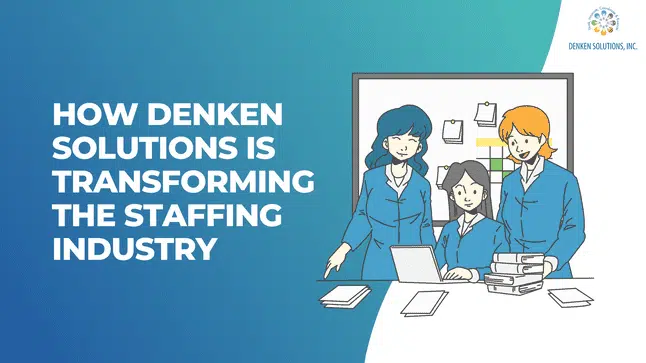In this era of a flexible work culture combined with labor challenges, companies have started prioritizing contingent workforce trends to manage their crucial projects. In any emergency situation in business, such as a shortage of skilled staff and an increase in workflow, companies now consider hiring and managing contingent workers instead of full-time ones for cost-effective and rapid project completions. Managing a global contingent workforce requires careful planning and an understanding of local labor laws, regulatory compliance, and communication challenges across different time zones. It has been found that a contingent workforce can be easily commissioned to an organization’s processes with little or no prior instructions and training programs. Contingent workers frame and follow advanced strategy models to accelerate a project’s progress, utilizing their broad expertise in every industry.
Before discussing the ways of managing contingent workers, it is important to understand the challenges often faced by employers while hiring and engaging contingent workers in their businesses from across the globe. These include:
- Failure to comply with legal and regulatory requirements such as employment laws, worker classification, and tax regulations.
- Failure to address the unique needs of contingent workers due to ineffective or poor onboarding processes.
- Lack of visibility into the engagement of remote contingent workers resulting from communication gaps.
- Difficulty in monitoring and evaluating the performance of contingent workers due to their lack of long-term commitment and availability.
- Ineffective team-building activities to develop strong relationships and enhance team cohesion.
Effective Ways of Contingent Workforce Management
To successfully mitigate contingent workforce challenges and develop a flawless strategy for managing contingent workers, the following ways need to be followed by employers:
Clear communication of goals and expectations
When assigning projects to contingent workers, every manager should clearly brief them on their responsibilities and the scope of tasks. They should also transparently discuss the expected time frame for task completion and all other project strategies to build awareness about the work done. The establishment of clear communication channels and protocols will remove all confusion and misalignments in project implementations, assisting the company in witnessing faster results without compromising quality. Regular interactions through virtual meetings will also foster a sense of inclusion in the workers. Effective onboarding for remote contingent workers is crucial, as it ensures they understand their roles and responsibilities from the outset, which leads to smoother integration into the team.
Consistent monitoring of work done
It is equally necessary for managers to catch up with the contingent team’s workflow regarding their assigned tasks at regular intervals. They should utilize the agile-scrum methodology of project management and focus on three major objectives daily: what was achieved yesterday according to plan, what tasks need to be planned for today, and what hurdles need assistance from the organization level. Besides making them aware of their performance expectations and deliverables, employers must initiate feedback mechanisms for the effective monitoring and evaluation of their performance. This will boost the productivity of the contingent workers, enabling the organization to achieve its goals and objectives.
Partner closely with the vendor agency
The most advisable way to mitigate disputes with any contingent worker is to connect closely with the staffing agency. Employers should pass the note to the point of contact at the vendor agency to manage the issue. They should leave it to the vendor agency to take the appropriate corrective and preventive actions for better risk management. A strong partnership will create a win-win relationship for the staffing agency and your company. By hiring contingent workers from a reputable and reliable staffing agency, you can alleviate the legal and regulatory compliance challenges. Specialized staffing agencies have the much-needed knowledge about the legal requirements of contingent staff. Moreover, they ensure a streamlined onboarding process, relieving employers from the hassle of integrating contingent workers into the business process.
Key Factors to Consider When Using a Contingent Workforce for Your Company
As you decide to keep up with contingent workforce trends and build a diverse and inclusive contingent workforce for your business, it is important to consider the following factors:
Salary
The salary quote and calculation will differ between contract and full-time workers. Contract workers’ salaries are typically quoted in dollars per hour, e.g., $55/hr, and the payment they receive in each payment cycle is based on the hours multiplied by the pay rate quoted in their offer letter.
Training and development
You don’t need to bear any additional expenses for providing advanced training or personal development programs to upskill contractual workers, unlike full-time workers. Contractual workers will strive to build their own skill sets to compete with all industrial trends themselves.
Broader industry knowledge
Since contingent workers typically work for companies for shorter durations, they can provide insights and strategies within the industries from their various industry experiences to execute a given task or process. This ensures that customers get industry best practices.
Hiring process
The hiring method for full-time employees is time-consuming as various levels of assessments are involved. Since a long-term employment relationship has to be made, every level of evaluation is important. However, hiring contractual workers can be done within less time as they already possess the qualifications in the area in which you are seeking talent.
Conclusion
As discussed above, certain factors must be considered when planning to develop a contingent workforce system for your company. A company needs to understand the major challenges associated with contingent workers to adopt perfect hiring strategies and shape effective contingent workforce management. Organizational leaders tend to remain occupied with a multitude of tasks concerning business growth and development. It is challenging for them to devote time and effort to deploying a fully-fledged contingent workforce within a short time frame. By partnering with a reliable vendor agency, employers can ensure smooth interlink between contingent workers and their full-time teams, which can help optimize project timelines and results.



